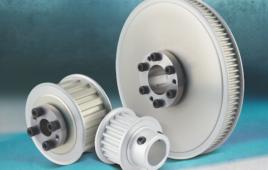By Tony Holtz, Applications Engineer, Protolabs
Digital Manufacturing is the latest term used to describe developments in the manufacturing world. It is an integrated approach to manufacturing centered around the use of computers, sensors, and the internet. Manufacturing tools that are more automated make it easier to improve efficiency and reduce the costs of production.

The benefits of digital manufacturing include:
–Reducing time to market
–Reducing labor overhead and asset use
–Better control of quality and inventory
The goal behind digital manufacturing is to help designers create and develop products through one streamlined methodology.
In many cases, digital manufacturing is a natural progression of traditional manufacturing. Not only does it streamline manufacturing, it can also accelerate every step of a part creation process. In addition, digital manufacturing is scalable and flexible.
The digital approach to injection molding, for example, typically involves the software behind the scenes. For service providers like Protolabs, it is often used to review parts and design molds.
Digital manufacturing needs fewer people for a hands-on approach during the quoting and mold design stages. The result is that engineers spend their time reviewing more parts and processing more molds. But the benefits don’t stop there. What used to take weeks to do when producing parts can now be done in hours.
For a company like Protolabs, the quoting software allows engineers to review wall thickness, draft angles and other critical molding constraints while turning them into a full design for manufacturing review. The mold design software takes the customer CAD data and applies appropriate mold shrink, shutoffs, gating, ejection, cavity positioning as well as tool paths for the CNC machines to produce the required mold geometry.
The digital approach continues through manufacturing by being nearly paperless with all work instructions in a digital form through the build department. Each technician has their own computer so they can apply the appropriate finishes to selected surfaces.
Other key benefits include:
–Faster quoting and mold/parts manufactured. Quoting usually occurs within hours and mold or parts are produced in 1 to 15 business days.
–Lower cost to have mold produced. Pricing begins around $1500.
–On-demand manufacturing with no commitment to higher volumes, typically 25 to 10’s of thousands of parts.
Drawbacks include:
–Some complex part designs cannot be manufactured or changes may be needed to have parts done quickly. Examples are size constraints and no collapsible coring or lifters. But oftentimes it’s possible to achieve these same features using hand loaded inserts, cams or pass through coring.
–Larger volumes in the millions may be best suited for traditional injection molding.
The best applications for a digital manufacturing approach include early prototyping, bridge tooling, end-of-life planning or short-run production
Digital manufacturing will not replace injection molding. All manufacturing processes exist for a reason as they each have benefits. As capabilities evolve, the majority of molded parts may begin with digital injection molding before traditional molding. At volumes in the millions, it is often best to stay with traditional injection molding. However, don’t count quick turn digital injection molding out even in this situation, as this technology is often very capable of producing millions of parts over the life of a molding project.
Protolabs
www.protolabs.com
Filed Under: Uncategorized




